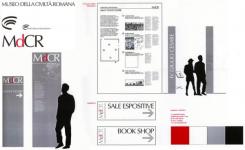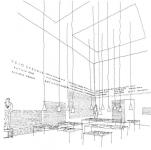Renovation and revitalisation of the Museum of Roman Civilisation {Rome, Italy}.
Originally commissioned by FIAT, the Museum of Roman Civilisation in the EUR was designed by Aschieri, Bernardini, Pascoletti and Peressutti, and build between 1938 and 1955. When commissioned - once again by FIAT Spa - to renovate and revitalise the museum, the architects decided to emphasise its educational function and, in a city which "is itself, even today, a wonderful living museum", create a permanent reference centre on the Roman world. Since the EUR is well outside the historical centre, they have tried to help visitors overcome the sense of distance from the cental Rome by creating both physical links outside and signage inside the museum {using special graphics} pointing out things that can be studied in the "real" Rome. With the museum`s large courtyard now serving as a preparatory space, the "Roman style" of the building itself is emphasised by cast of statues - imprisoned under {often coloured} glass and repeated seemingly ad infinitum to stress the "copying" concept - which raise specific expectations in visitors even before they enter. Inside, the impression of stateliness and mystery is emphasised, and the significance of the exhibits enhanced, when visitors see more statues displayed in isolation, or in groups like forests of statues, on continuously extended supports { benches, plinths, pedestals}. these are offset by other fascinating items {including casts of Traian Column} fundamental to the museum`s abbreviated historical survey, which benefits from more theatrical settings where the building offers areas of outstanding architectural interest. At the end of the exhibition route, in the "law Room", the bookshop adjacent to the cafeteria will relate ancient texts to modern books in a setting where a large frieze and statues of roman jurist contrast with a calligraphic display of lettering on the walls. {M.G.Z. da Abitare n. 408}.
museum design: Marta Laudani & Marco Romanelli with Nicola Auciello, Massimo Noceto
graphic design: Giuseppe Basile
2000
2001
.jpg)
.jpg)



.jpg)
